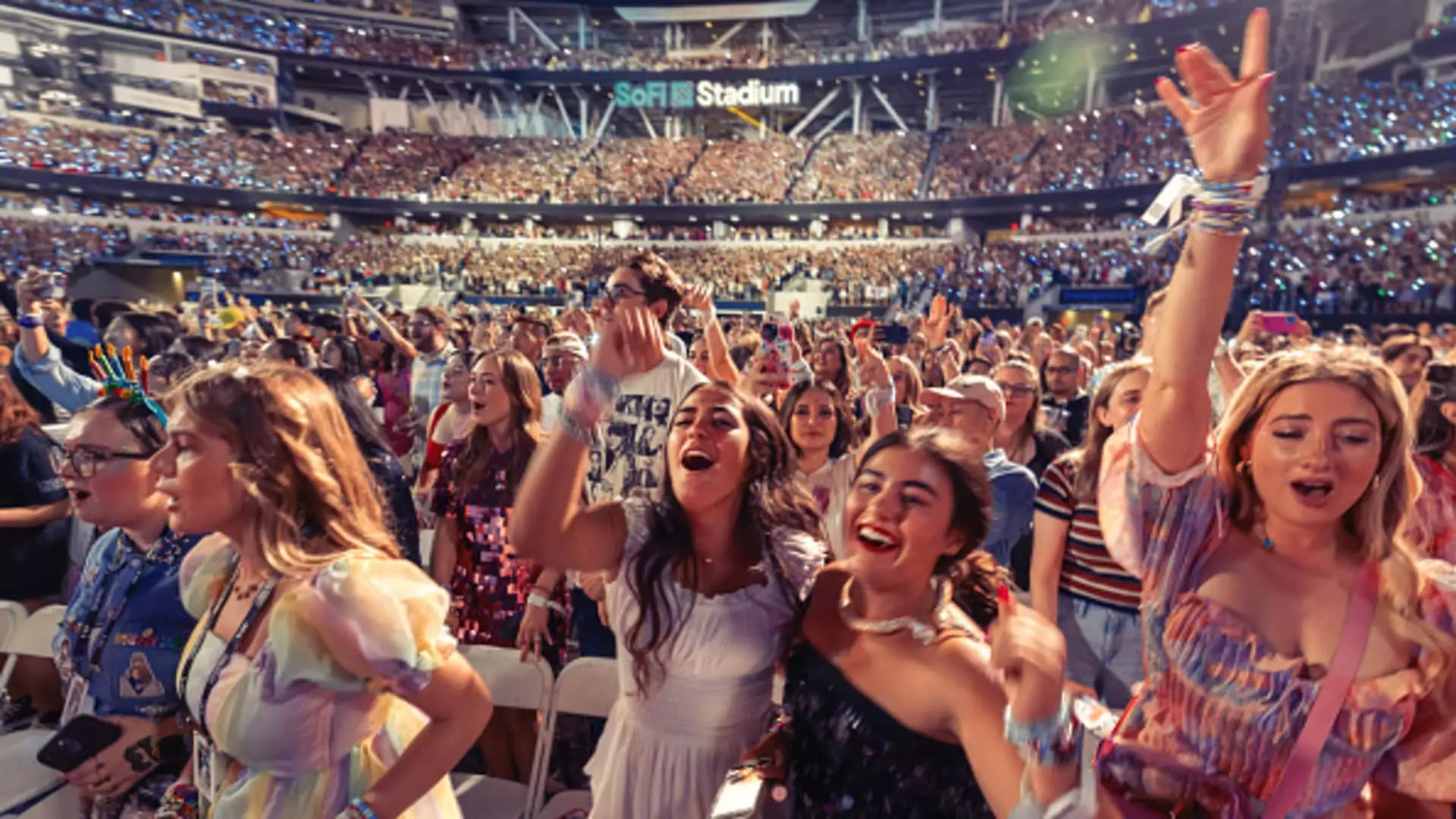As the live music landscape becomes increasingly competitive, fans are left grappling with how much they’re willing to pay to see their favorite artists perform. The year 2025 promises an impressive roster of musical talents ranging from Billie Eilish to Kendric Lamar, luring fans into a whirlwind of concerts. However, as ticket prices soar, many are questioning the sustainability of such “funflation”—a term used to describe the rising costs associated with entertainment and leisure activities.
In the years immediately following the pandemic, many people eagerly returned to the world of live entertainment, leading to a significant surge in costs, with ticket prices climbing an astounding 20% since 2021. According to recent data from the Bureau of Labor Statistics’ Consumer Price Index, consumers have shown an unprecedented appetite for spending on live experiences, even as those experiences become increasingly costly.
The phenomenon of “funflation” appears to have taken hold, with concert-goers attending an average of seven musical shows in 2024, a number that is set to increase in the coming year. A recent survey by CouponCabin suggests that nearly 36% of fans are prepared to spend between $100 and $499 on concert tickets in 2025, while a notable 17% are even willing to splurge up to $1,000 for a coveted seat. This inclination to spend large sums for the sake of entertainment exemplifies a cultural shift toward prioritizing experiences over material goods—a shift that is more pronounced among younger generations like Gen Z and millennials.
Emerging from this environment is the concept of “passion tourism,” where individuals are willing to travel great distances, sometimes internationally, to attend their favorite concerts. High-profile events, such as Taylor Swift’s Era Tour, have caused fans to accept escalating prices as a part of their live music experience, with some going as far as incurring debt to participate in these extravagant outings. A striking statistic reveals that nearly 40% of Gen Z and millennial travelers reportedly spent as much as $5,000 solely on tickets for destination live events, according to a study by Bread Financial.
This willingness to splurge speaks to a broader trend in consumer behavior. Economists and financial analysts now suggest that today’s generation is adopting a “you only live once” mindset, making discretionary spending on experiences feel justified, even in challenging economic climates. While the necessity to balance budgets persists, many individuals are unwilling to forgo experiences that contribute to their personal joy and fulfillment, demonstrating a resiliency in the face of rising costs.
At the core of the rising ticket prices lies the practice of dynamic pricing, which has garnered considerable attention in recent months. Originally applied to industries like airline travel and ride-sharing, dynamic pricing entails adjusting prices based on fluctuating demand. Joe Bennett, a forensic musicologist at Berklee College of Music, notes that previously, concert tickets were generally sold at a fixed price, but the shift to dynamic pricing reflects a broader adaptation of the market.
While it can maximize revenue for artists and promoters, dynamic pricing has also stirred controversy among fans. Recent high-profile tours have illuminated this issue. For example, Ticketmaster faces scrutiny in the United Kingdom over increased prices for reunion concerts of the Britpop band Oasis, forcing the group to abandon the practice for their North American leg. In contrast, Taylor Swift’s decision to forgo dynamic pricing for her tour exemplifies an artist’s consideration for loyal fans, highlighting the delicate balance between profitability and customer satisfaction.
With the ongoing demand for live music events, experts like economist Alan Krueger have pointed out that revenue streams from live concerts surpass those from recorded music. As the landscape continues to evolve, industry stakeholders must navigate the tricky terrain of keeping tickets accessible while optimizing profit margins.
As we step into 2025, the concert-going experience hangs in a precarious balance. While fans are willing to invest in memorable live performances, they increasingly demand fairness in pricing. The ongoing dialogue surrounding dynamic pricing and its implications may force ticketing platforms to reconsider strategies that benefit both consumers and the industry. Ultimately, as the live music scene adapts to the changing economic realities of concert-goers, the challenge will be ensuring that both high-quality experiences and affordable access remain priorities in this exciting yet costly world of live music.


Leave a Reply